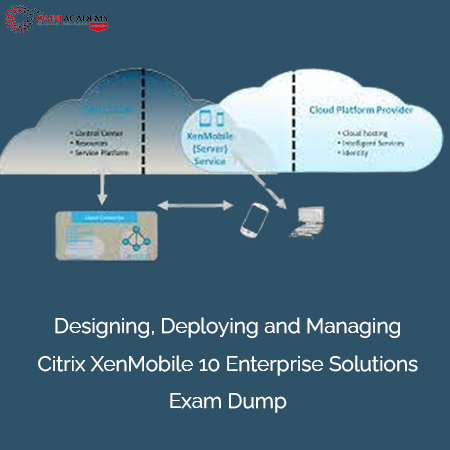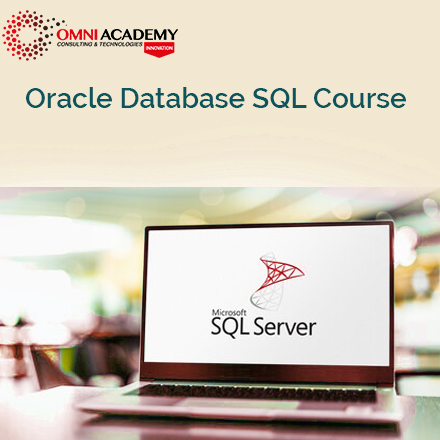Oracle Database 12c: Data Guard Administration
The Oracle Certified Expert, Oracle Database 12c: Data Guard Administrator certification is for Database Administrators who have experience in creating a physical and a logical standby database, managing Oracle Net Services in a data guard environment, using Oracle active data guard, creating and monitoring a data guard broker configuration, and configuring data protection modes among others. Passing this exam also proves your fluency in and a solid understanding of Oracle Data Guard concepts, configuration, management, optimization and monitoring, data protection, HA and disaster recovery.
Benefits to You
You’ll walk away from this course with an understanding of how Data Guard standby databases can be used to support various production functions. These functions include reporting, querying and testing, while in a standby role.\
Course Outline:
Module1:Introduction to Oracle Data Guard
- What Is Oracle Data Guard?
- Types of Standby Databases
- Types of Data Guard Services
- Role Transitions: Switchover and Failover
- Oracle Data Guard Broker Framework
- Choosing an Interface for Administering a Data Guard Configuration
- Oracle Data Guard: Architecture(Overview)
- Primary Database Processes
Module2: Networking for Oracle Data Guard
- Networking Overview
- Listener.ora Configuration
- Statics vs. Dynamic Registration
- Static Entries for Database Duplication and SQL Maintenence
- Static Entries for Broker Operations
- Oracle Network Configuration Tuning
- Tnsnames.ora Configuration
Module3: Creating a Physical Standby Database by Using SQL and RMAN Commands
- Steps to Create a Physical Standby Database
- Preparing the Primary Database
- FORCE LOGGING Mode
- Configuring Standby Redo Logs
- Creating Standby Redo Logs
- Using SQL to Create Standby Redo Logs
- Viewing Standby Redo Log Information
- Setting Initialization Parameters on the Primary Database to Control Redo Transport
Module4:Oracle Data Guard Broker: Overview
- Oracle Data Guard Broker: Features
- Data Guard Broker: Components
- Data Guard Broker: Configurations
- Data Guard Broker: Management Model
- Data Guard Broker: Architecture
- Data Guard Monitor: DMON Process
- Benefits of Using the Data Guard Broker
- Comparing Configuration Management With and Without the Data Guard Broker
Module5:Creating a Data Guard Broker Configuration
- Data Guard Broker: Requirements
- Data Guard Broker and the SPFILE
- Data Guard Monitor: Configuration File
- Data Guard Broker: Log Files
- Creating a Broker Configuration
- Defining the Broker Configuration and the Primary Database Profile
- Adding a Standby Database to the Configuration
- Enabling the Configuration
Module6:Creating a Physical Standby Database by Using Enterprise Manager Cloud Control
- Using Oracle Enterprise Manager to Create a Broker Configuration
- Creating a Configuration
- Creating a New Configuration
- Adding a Standby Database to an Existing Configuration
- Using the Add Standby Database Wizard
- Standby Database Creation: Processing
- Standby Database Creation: Progress
- Verifying a Data Guard Configuration
Module7: Creating a Logical Standby Database
- Benefits of Implementing a Logical Standby Database
- Logical Standby Database: SQL Apply Architecture
- SQL Apply Process: Architecture
- Preparing to Create a Logical Standby Database
- Unsupported Objects
- Unsupported Data Types
- Checking for Unsupported Tables
- Checking for Tables with Unsupported Data Types
Module8: Creating and Managing a Snapshot Standby Database
- Snapshot Standby Databases: Overview
- Snapshot Standby Database: Architecture
- Converting a Physical Standby Database to a Snapshot Standby Database
- Activating a Snapshot Standby Database: Issues and Cautions
- Snapshot Standby Database: Target Restrictions
- Viewing Snapshot Standby Database Information
- Using DGMGRL to View Snapshot Standby Database Information
- Converting a Snapshot Standby Database to a Physical Standby Database
Module9: Using Oracle Active Data Guard
- Oracle Active Data Guard
- Using Real-Time Query
- Checking the Standby’s Open Mode
- Understanding Lag in an Active Data Guard Configuration
- Monitoring Apply Lag: V$DATAGUARD_STATS
- Monitoring Apply Lag: V$STANDBY_EVENT_HISTOGRAM
- Setting a Predetermined Service Level for Currency of Standby Queries
- Configuring Zero Lag Between the Primary and Standby Databases
Module10:Configuring Data Protection Modes
- Data Protection Modes and Redo Transport Modes
- Maximum Protection Mode
- Maximum Availability Mode
- Maximum Performance Mode
- Comparing Data Protection Modes
- Setting the Data Protection Mode by Using DGMGRL
- Setting the Data Protection Mode
Module11: Performing Role Transitions
- Role Management Services
- Role Transitions: Switchover and Failover
- Switchover
- Preparing for a Switchover
- Performing a Switchover by Using DGMGRL
- Performing a Switchover by Using Enterprise Manager
- Considerations When Performing a Switchover to a Logical Standby Database
- Situations That Prevent a Switchover
Module12:Using Flashback Database in a Data Guard Configuration
- Using Flashback Database in a Data Guard Configuration
- Overview of Flashback Database
- Configuring Flashback Database
- Configuring Flashback Database by Using Enterprise Manager
- Using Flashback Database Instead of Apply Delay
- Using Flashback Database and Real-Time Apply
- Using Flashback Database After RESETLOGS
- Flashback Through Standby Database Role Transitions
Module13: Enabling Fast-Start Failover
- Fast-Start Failover: Overview
- When Does Fast-Start Failover Occur?
- Installing the Observer Software
- Fast-Start Failover Prerequisites
- Configuring Fast-Start Failover
- Setting the Lag-Time Limit
- Configuring the Primary Database to Shut Down Automatically
- Automatic Reinstatement After Fast-Start Failover
Module14: Managing Client Connectivity
- Understanding Client Connectivity in a Data Guard Configuration
- Understanding Client Connectivity: Using Local Naming
- Preventing Clients from Connecting to the Wrong Database
- Managing Services
- Understanding Client Connectivity: Using a Database Service
- Creating Services for the Data Guard Configuration Databases
- Configuring Role-Based Services
- Adding Standby Databases to Oracle Restart Configuration
Module15: Backup and Recovery Considerations in an Oracle Data Guard Configuration
- Using RMAN to Back Up and Restore Files in a Data Guard Configuration
- Offloading Backups to a Physical Standby
- Restrictions and Usage Notes
- Backup and Recovery of a Logical Standby Database
- Using the RMAN Recovery Catalog in a Data Guard Configuration
- Creating the Recovery Catalog
- Registering a Database in the Recovery Catalog
- Setting Persistent Configuration Settings
Module16:Patching and Upgrading Databases in a Data Guard Configuration
- Upgrading an Oracle Data Guard Broker Configuration
- Upgrading Oracle Database in a Data Guard Configuration with a Physical Standby Database
- Upgrading Oracle Database in a Data Guard Configuration with a Logical Standby Database
- Using DBMS_ROLLING to Upgrade the Oracle Database
- Requirements for Using DBMS_ROLLING to Perform a Rolling Upgrade
- Leading Group Databases and Leading Group Master
- Trailing Group Databases and Trailing Group Master
- Performing a Rolling Upgrade by Using DBMS_ROLLING
Module17:Monitoring a Data Guard Broker Configuration
- Monitoring the Data Guard Configuration by Using Enterprise Manager Cloud Control
- Viewing the Data Guard Configuration Status
- Monitoring Data Guard Performance
- Viewing Log File Details
- Enterprise Manager Metrics and Alerts
- Data Guard Metrics
- Managing Data Guard Metrics
- Viewing Metric Value History
Module18: Optimizing a Data Guard Configuration
- Monitoring Configuration Performance by Using Enterprise Manager Cloud Control
- Optimizing Redo Transport Services
- Setting the ReopenSecs Database Property
- Setting the NetTimeout Database Property
- Optimizing Redo Transmission by Setting MaxConnections
- Setting the MaxConnections Database Property
- Compressing Redo Data by Setting the RedoCompression Property
- Delaying the Application of Redo
Module19: Oracle Database Exadata Cloud Service Overview
- Introducing Exadata Cloud Service
- Service Configuration, Connection, Architecture & Availability
- Data Security & Management Responsibilities
- Storage Configuration & Management Details
- Simple Web-Based Provisioning & Management
- REST APIs
- Backup and Recovery
- Migrating to Exadata Cloud Service
Training Track: Oracle Database 12c: Data Guard Administration
Job Interview Preparation (Soft Skills Questions & Answers)
- Tough Open-Ended Job Interview Questions
- What to Wear for Best Job Interview Attire
- Job Interview Question- What are You Passionate About?
- How to Prepare for a Job Promotion Interview
Your FREE eLEARNING Courses (Click Here)
Internships, Freelance and Full-Time Work opportunities
- Join Internships and Referral Program (click for details)
- Work as Freelancer or Full-Time Employee (click for details)
Flexible Class Options
- Week End Classes For Professionals SAT | SUN
- Corporate Group Trainings Available
- Online Classes – Live Virtual Class (L.V.C), Online Training
Related Oracle Courses
Oracle Database 12C RAC Administration
R12 X Oracle HRMS System Administration Fundamentals Course
Oracle Database 12C Data Guard Administration Course
[/vc_column_text]






